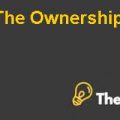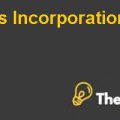
ENERGY GEL CASE STUDY
PROBLEM STATEMENT
The vice president of HPC’s business development, Harry Wickler was concerned about the new product line development. The discussion was made on the product line which Wickler wanted to introduce as competitors already delivered the identical product into the market. During the discussion on the new product line, question arises that how to evaluate the Energy Gel. The following problem was faced:
Did the potential cannibalization of HPC’s highly profitable energy bar products diminish the attractiveness of launching the new energy gel?
Secondly, should the new project bear incremental or even full costs for the use of otherwise-idle capacity?
Florence Vivar, chief financial officer of HPC decided to evaluate the appropriate approach on this for evaluation of the project’s future potential. The analysis made is as follows:
ANALYSIS
To analyze the Energy Gel project about the excess capacity available in Energy bar plant, Mr. Leiter’s approach is the best. Mr. Leiter proposed the full capacity utilization approach and he also suggested that Energy Gel project should be evaluated on stand-alone basis.
High Performance Corporation (HPC) is deciding whether to proceed with a new product line or not, and if they do proceed with the project then Energy Gel project should be evaluated. The evaluation bases defined by Mr. Winkler and Mr. Leiter are clearly mentioned in the case for the evaluation. The evaluation basis is focused on, how to utilize the excess capacity for manufacturing of Energy Gel. After thorough analysis on both of the evaluation basis defined by both managers, Mr. Leiter’s technique is optimal. Mr. Leiter suggested that Energy Gel project should be evaluated through incurring full cost as stand-alone basis. Through this approach the true potential of the project will be evaluated. The evaluation is made on stand-alone basis and for this purpose an assumption is made that through utilization of equipment, it will depreciate at a faster rate which will ultimately decrease the long-term capacity of Leiter’s product. Another concern raised during the analysis was that, in the case demand of both products would decrease then what affects it would bring on the equipment? These are reasons for which Mr. Leiter’s full cost approach is appropriate for the evaluation.
Cannibalization:
Cannibalization is the common factor in which new product line is introduced in the market with reduction in units and sale of existing product which has growth potential. In the case of Energy Gel, Mr. Leiter’s cannibalization rate is inappropriate because Mr. Leiter wanted to recover his project’s partial utilization cost through the excess utilization of Energy Gel. For cannibalization the following assumptions are made:
Total units of 66 million will be produced and without erosion the unit sale will be $39 million; it will grow at 10% in 2001 and 2002, 9% in 2003, and it will grow by 8% in 2004 to 2010. Energy bar units will reduce in 2001 and 2002 by 10% rate, 9% in 2003 and it will reduce 8% from 2004 to 2010. Through this cannibalization utilization of energy bar plant will decrease by 1% in year 2001 and later on it will increase by 65% in 2002, 71% in 2003 77% in 2004 and it will be over utilize by 104% in 2008, by 113% in 2009 and 122% in 2010. This over utilization capacity will decrease the long-term growth of energy bar by 3 million units in 2008, 9 million units in 2009 and 15 million units in 2010. Through this cannibalization the capacity available to produce Energy Gel project will be 54.12 million units in 2001 and in year 2010 it will reduce the production capacity by 29 million units.
Sunk Cost:
Sunk cost is the cost which is already incurred in the past and cannot be recovered. In this case, sunk is $2.5 million from which $0.25 million is sunk cost.
Inflation rate:
Inflation rate is the intrinsic value of the currency which depreciates over time. In this case, the inflation rate is calculated through the price difference per unit between two years which resulted as 2.5% per annum. Through this inflation rate the unit sale will increase over time.
Cash flow with adjusted inflation:
Cash flows are calculated using discounted cash flow model incorporated with inflation rates. The cash flow statement has changed over the time period with some adjusted assumptions in it.
First of all sale will increase by adjusting the inflation in it over perpetuity rate. Cost of goods sold incurred with cumulative depreciation in it. As time passed more investment in capital was incurred and those incurred depreciation were not in the case Exhibit 5. The correction made in the excel sheet under the cash flow with adjusted inflation where all the depreciations are incurred as per equipment installed in the plant. In this cash flow, foregone depreciation is is added and all the expenses are adjusted with the inflation rates......................
This is just a sample partial case solution. Please place the order on the website to order your own originally done case solution.
The analysis of the decision on the introduction of new products. Key issues for discussion:. Sunk costs, additional costs, dispossession, shared bathroom, and treatment of inflation "Hide
by Artur Raviv, Jan M. Henry, Gero Steinroeder K. Source: Kellogg School Management 11 pages. Publication Date: January 1, 2003. Prod. #: KEL083-PDF-ENG













